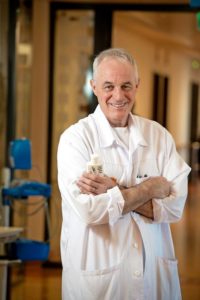Histories
From the mythology….
Hygie, the Health Goodness, cleanness and Hygiene!
In Greek mythology, Hygieia was the goddess of health and cleanliness. She was the daughter of Asclepius, god of medicine. Hygieia represents health and preventive medicine.
Her sisters were Panacea (goddess of healing by plants), Meditrine the healer, and Acéso. Asclepius and his daughters belonged to the lineage of Apollo, god of rational intelligence, who foreshadowed Western science.
The Greeks honored Hygieia as a powerful goddess. She gave recommendations on healing foods and other remedies. By preventing illness, she saved her father Asclepius the labor of continuously intervening to cure disease.
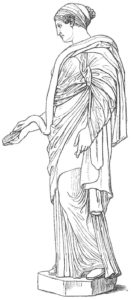
To nowadays discovers…!
Why is hand hygiene so important?
Ignace Semmelweis, (1818 – 1865) was a Hungarian doctor who was the father of hand hygiene. Semmelweis discovered that outbreaks of a leathal puerperal fever among women giving birth was prevented by doctors washing their hands. Doctors had been dissecting corpses and then going to the delivery room. The requirement of handwashing meant a drop in the infection rate from 18% to less than 1%. However, it was not until the end of the 19th century that his discovery was generally applied by the medical world.
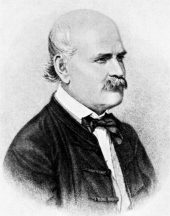
Florence Nightingale
Several years after Semmelweis, the Crimean War of the 1850s brought about a new handwashing champion, Florence Nightingale. Conditions in field hospitals were often crowded and unsanitary; it was common at the time for two-times more soldiers to die from diseases acquired in war hospitals than on the battlefield. Nightingale implemented handwashing and other hygiene practices in the war hospital in which she worked and later collaborated with the Sanitary Commission to reform hospitals and healthcare, leading to noticeable reductions in death rates, worldwide.
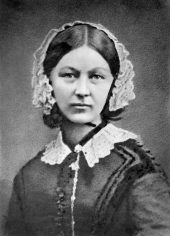
Robert Koch
Robert Koch was a leading microbiologist of his time, and today is considered one of the main founders of modern bacteriology. He determined the connection between infectious agents and disease, demonstrating that different germs caused different types of diseases. [4] In 1882, Koch discovered the tuberculosis bacillus, followed by the bacillus responsible for waterborne cholera two years later, in 1884.
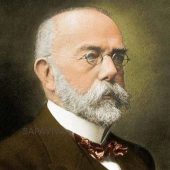
Louis Pasteur
Louis Pasteur’s work helped to shape the science of microbiology. In his experiments, Pasteur demonstrated that most infectious diseases were caused by germs, and not by “spontaneous generation” as previously thought. Pasteur suggested three methods to eradicate disease-causing micro-organisms, including filtering them out, heating them up, or exposing them to chemical solutions. The latter proved a cornerstone of modern medicine.
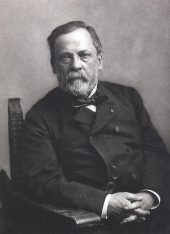
Joseph Lister
Expanding on the findings from Pasteur, Joseph Lister pioneered antiseptic surgery with the use of phenols. In the 1800s, post-surgical operations resulted in a mortality rate as high as 80%. In 1867, Lister introduced antiseptics into clinical surgery to effectively reduce infection rates, building on centuries of empiric use of antiseptics.
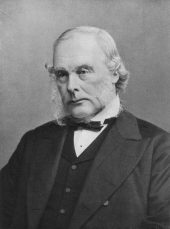
Alexander Fleming
In 1928, Sir Alexander Fleming revolutionized modern medicine with the discovery of penicillin. The antibiotic was mass-produced for use during World War II and has since revolutionized modern medicine and saved millions of lives. Conversely, the discovery and mass production of penicillin to treat bacterial infections also marked the birth of the story of antibiotic resistance.
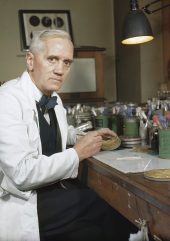
Mass introduction of alcohol-based hand rubs
Alcohol has been used as an antiseptic for centuries; with references to the use of wine in wound dressings dating back as early as the 4th and 5th century BCE. As early as 1363, distilled spirits were used in wound dressings, gaining popularity as the centuries progressed.
Although alcohol, and other antiseptics, had been used for disinfection for decades prior to the 1960s, this solution never reached mass market application in healthcare until the integration of moisturizers in hand disinfectant in the 1960s. Following the addition of moisturizers, alcohol-based hand sanitizers were distributed throughout healthcare institutions, replacing the requirement for frequent hand washing. The faster dry time, and extremely high efficacy rate was a quantum leap in infection prevention.
Pr. Didier Pittet
Didier Pittet (born 20 March 1957 in Geneva, Switzerland) is an infectious diseases expert and the director of the Infection Control Programme and WHO Collaborating Centre on Patient Safety, University Hospital of Geneva, Geneva, Switzerland. Since 2005, Pittet is also the External Lead of the World Health Organization (WHO) Global Patient Safety Challenge “Clean Care is Safer Care” and African Partnerships for Patient Safety.
Expanding his research beyond yeast infections and intensive, device-associated care to issues of overall hospital epidemiology and infection prevention, Pittet set out to identify the most effective substitute to mundane pharmaceutical supplies including, soap – in which he found his key ingredient (alcohol), that created similar germ-eliminating outcomes and has since been used, alongside glycerol (protective emollient) and hydrogen peroxide self-sterilizer (H2O2), in the production of all hand sanitizer.
“Thanks to this gel, we were able to start a revolution in patient care, replacing water and soap in hand hygiene, which was materially impossible during treatment. I was helped by a team, and by the WHO relay” – Didier Pittet.
“I didn’t earn a dime, we created this formula and modified it so that it was patent free. We used glycerin with alcohol, we donated the idea to WHO to be able to produce it locally” – Didier Pittet.
In an effort to deter intermediaries from monopolizing manufacturing, sales and distribution of the product, Didier Pittet officially signed over his patent rights to the World Health Organisation, who have since published the formula to ensure all individuals have access to cheap hand hygiene solutions.
